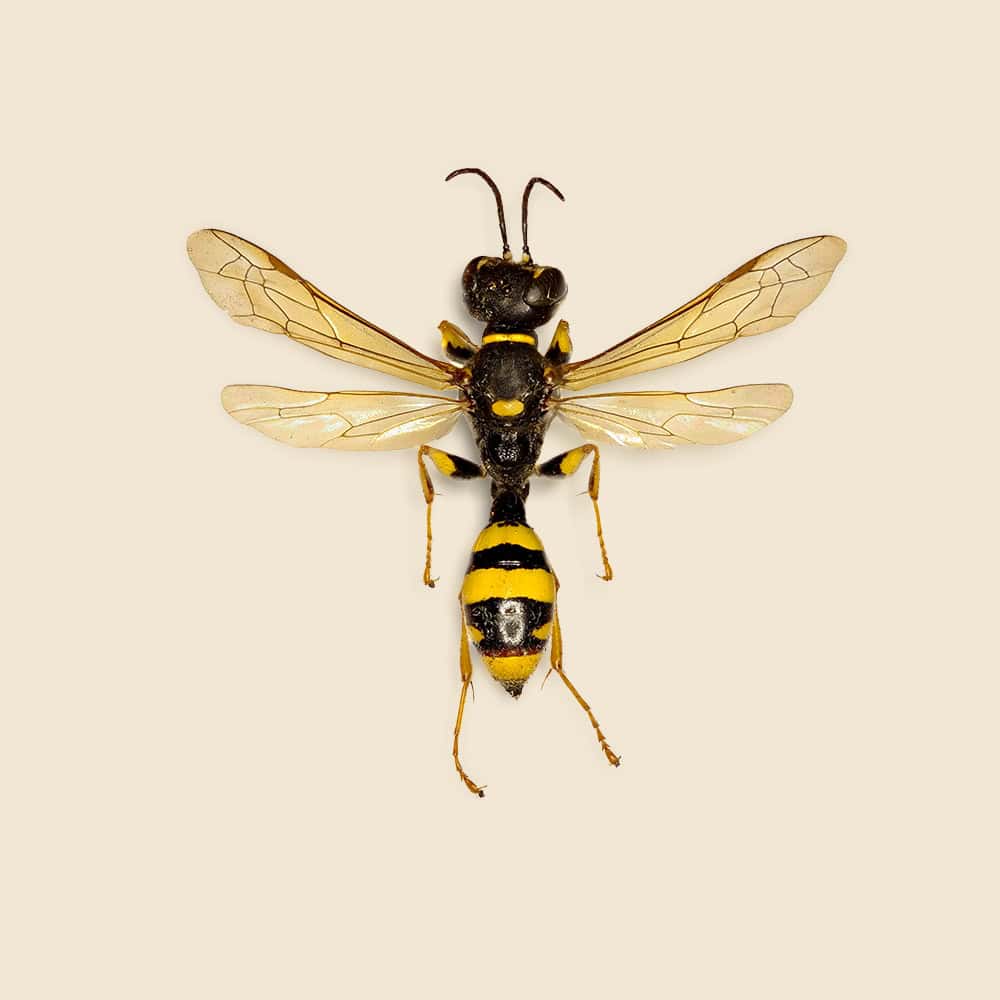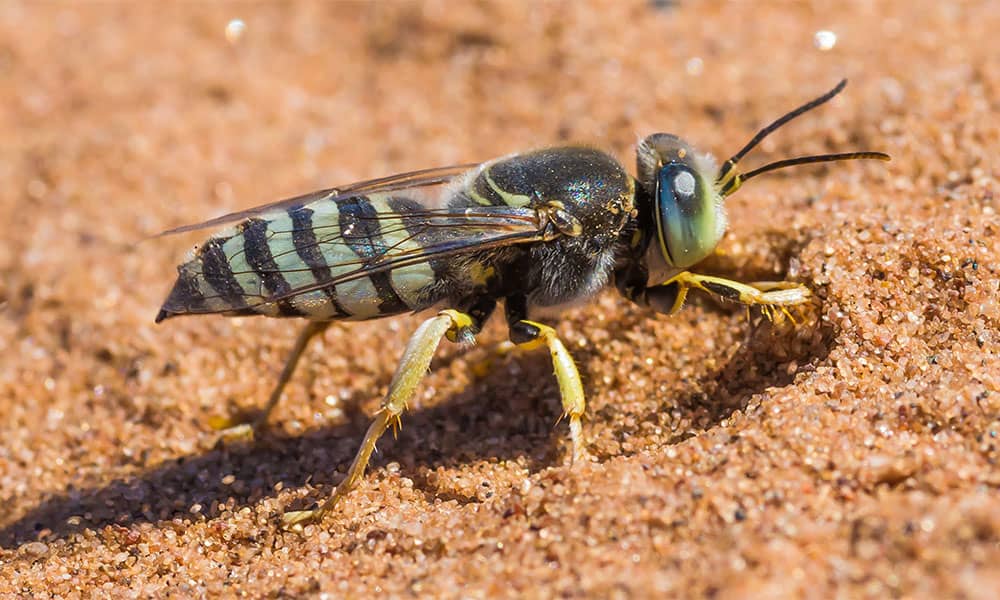Sand Digger Hunting Wasp Facts & Information
Sand digger wasps are solitary insects known for their unique burrowing behavior and striking appearance. These wasps are often recognized by their slender bodies and bright coloration, typically in shades of yellow and black. While they play a beneficial role in the ecosystem by preying on various pests, their presence can cause concern for homeowners due to their nesting habits and potential for stinging.

Ammophila sabulosa
What You Need To Know About Sand Digger Hunting Wasps
What do sand digger wasps look like?
Sand digger wasps are medium-sized insects, typically ranging from 0.5 to 1 inch in length. They have slender bodies, often with a metallic sheen, and come in various colors, including black, yellow, and reddish-brown. Their long legs are adapted for digging, and they possess narrow waists, which help distinguish them from other wasps.
What do sand digger wasps eat?
Sand digger wasps primarily feed on nectar from flowers, but they are also known for their predatory behavior. Females hunt and paralyze small insects, such as beetles and caterpillars, which they use as food for their larvae. They are particularly efficient hunters, capturing prey and bringing it back to their nests.
What sort of habitat do sand digger wasps live in?
These wasps are typically found in sandy or loose soil environments, including beaches, dunes, and open fields. They prefer sunny areas where they can easily dig their nests, creating burrows in the sand or soil. Their nests are simple structures, often consisting of a vertical tunnel with a chamber at the bottom.
How do sand digger wasps commonly behave?
Sand digger wasps are solitary insects, with females responsible for building and maintaining their nests. They are known for their digging behavior, which they perform with impressive speed and efficiency. When hunting, females exhibit remarkable skill in capturing prey, often immobilizing it before transporting it back to their nest.
Did you know this about sand digger wasps?
Sand digger wasps play an important role in the ecosystem as both pollinators and pest controllers. They are particularly fascinating because they exhibit maternal behaviors, meticulously preparing their nests with paralyzed prey for their larvae to consume. Despite their intimidating appearance, they are generally non-aggressive towards humans and prefer to avoid confrontation. Their unique life cycle and hunting techniques make them intriguing insects to observe in their natural habitats.
Understanding Sand Digger Hunting Wasp Infestations
Understanding sand digger wasp infestations is essential for effective management. These wasps are usually found in sandy or loose soil, where they excavate underground nests to lay their eggs. Adult females hunt insects, such as caterpillars and beetles, which they paralyze and store in their nests as food for their larvae. While they are not aggressive, sand digger wasps can sting if they feel threatened, particularly when defending their nests.

How Hearts Handles Sand Digger Hunting Wasp Treatment
Hearts Pest Management employs an integrated pest management approach to handle Sand Digger Wasp infestations.
Sand Digger Wasp Inspection
Sand Digger Wasp Treatment
Sand Digger Wasp Prevention
Educational Resources

Think You Might Have a Sand Digger Hunting Wasp Infestation?
At Hearts Pest Control, we understand the challenges associated with Sand Digger Hunting Wasp infestations and are here to provide professional solutions tailored to your needs. Flourishing in warm and humid climates, they are prevalent in many regions, including San Diego County, Orange County, and Los Angeles County.